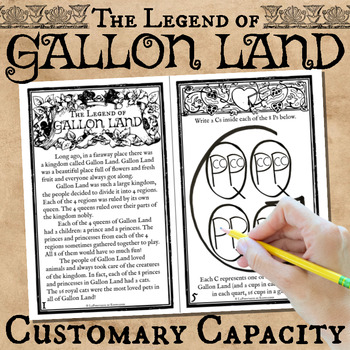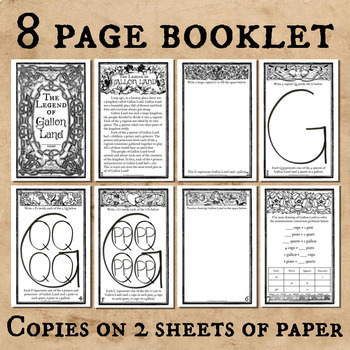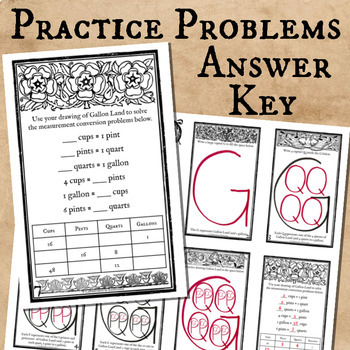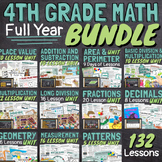Gallon Land Customary Capacity Measurement Mnemonic Cups, Pints, Quarts, Gallons
- PDF
What educators are saying
Also included in
- This measurement math unit includes 16 easy to teach lessons that cover 4th grade common core measurement standards (CCSS). It includes the metric system and customary system (length, capacity, and mass), elapsed time word problems, money word problems, and fraction line plots. Skills taught includPrice $31.68Original Price $45.25Save $13.57
- This year long fourth grade math bundle includes 132 math lessons spanning 11 different units. All lessons are common core aligned and cover all CCSS standards required for 4th grade math!Begin with each unit guide (these are free and linked below!). The lesson plans will walk you through each unitPrice $156.80Original Price $392.00Save $235.20
Description
This mnemonic device helps students remember customary units for capacity (cups, pints, quarts, and gallons) so that they can easily convert between units when solving measurement problems in math class.
This resource includes an 8 page booklet (copies on 2 sheets of regular printer paper) that tells "The Legend of Gallon Land," a story involving a kingdom called Gallon Land (gallon) with 4 queens (quarts), 8 princes/princesses (pints), and 16 cats (cups).
After the story, the booklet walks students through drawing the accompanying visual (a G with 4 Qs inside, each with 2 Ps, and each of the Ps with 2 Cs) and includes practice problems converting between customary units for capacity. An answer key is also included.
This practical math mnemonic activity is disguised as an exciting fairytale book your students will love! Check out the preview for a full look at what's soon to be your favorite measurement tool.
Please follow my store here for more great resources!
You can also find me on Facebook, Instagram, and lafountaineofknowledge.com where you'll discover ideas, inspiration, and plenty of freebies! Or join my email list to get my monthly newsletter with exclusive FREE resources you can't get anywhere else!
Want free money to spend on Teachers Pay Teachers? Rate this product to earn some TpT credit! Leaving feedback helps us both out and takes less than a minute! Your support makes it possible for me to continue making and sharing great resources! Thank you!
Credits: Graphics by Emmie Norfolk, used with permission. Fonts used include: IM Fell DW Pica SC and IM Fell English by Igino Marini and Griffy by Neapolitan (all fonts were used with permission under open source licenses.)







